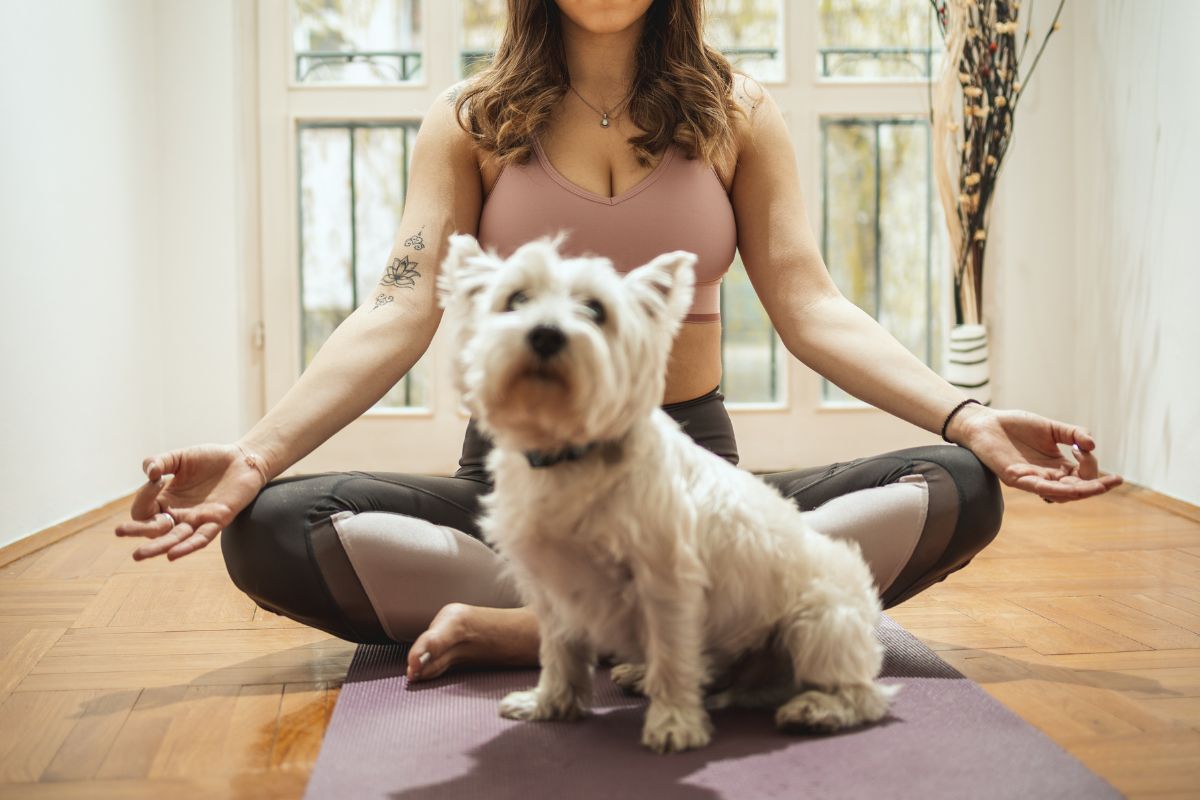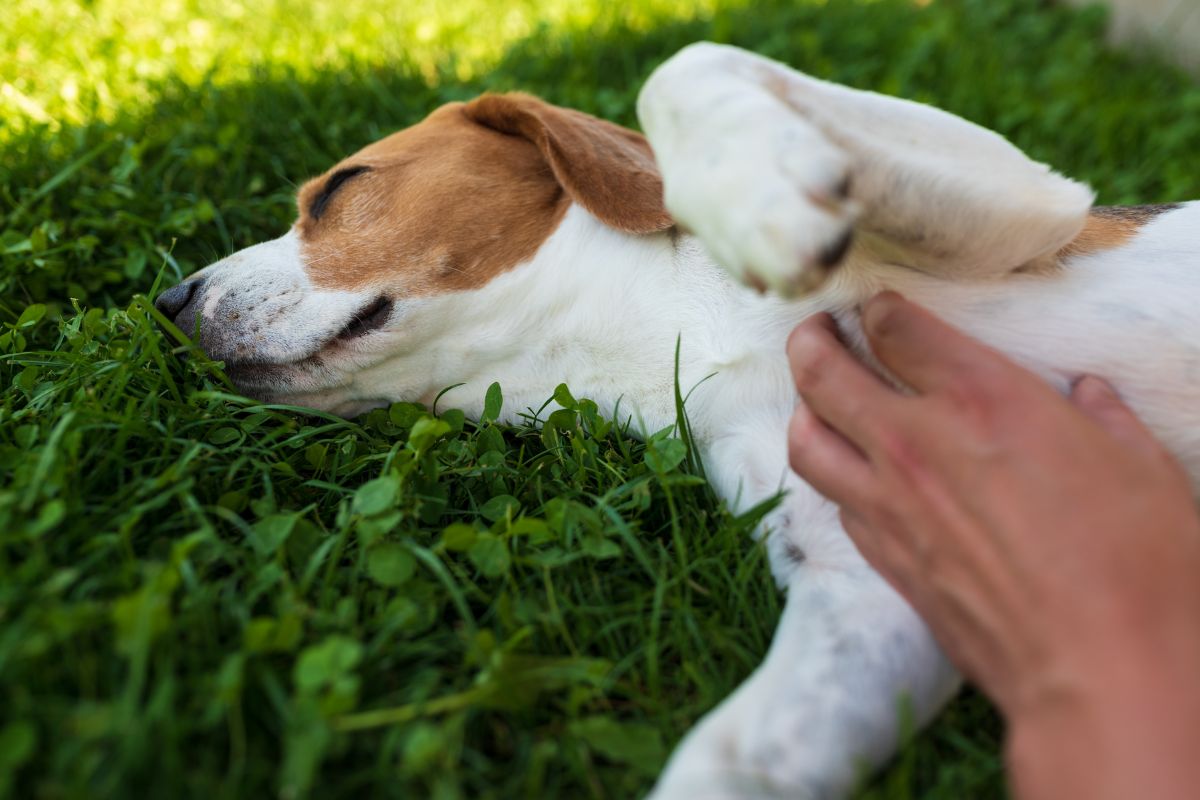How to Introduce Meditation Practices to Calm Your Pet

Pets are an important part of our lives, and just like humans, they can experience stress, anxiety, and emotional turmoil. Whether it's due to separation anxiety, loud noises, or simply the hustle and bustle of everyday life, many pets struggle with staying calm.
One effective and often overlooked way to help them is through the practice of meditation. Introducing calming meditation techniques to your pet can have a positive impact on their mental and emotional well-being, helping them manage stress in a natural and gentle way.
In this article, we’ll explore how to introduce meditation practices to calm your pet and enhance the bond you share.
Understanding How Meditation Affects Pets
Meditation is a powerful tool for achieving mental clarity and emotional balance. For humans, it's well-known that meditation helps reduce stress and promote relaxation.
But what about our pets? Animals, especially dogs and cats, are highly sensitive to their environment and the emotions of their human companions. Meditation can help them feel more grounded and relaxed by lowering stress hormones and creating a sense of calm.
 The Benefits of Meditation for Pets
The Benefits of Meditation for Pets
Introducing meditation to your pet may seem unconventional, but the benefits can be profound. Here are some of the key advantages:
1. Reducing Anxiety and Stress
Just like people, pets can suffer from anxiety, whether it's due to separation from their owners, travel, or unfamiliar environments. Meditation helps pets release tension and manage anxiety by promoting a calm state of mind.
With consistent practice, pets can learn to feel more at ease in situations that typically trigger stress.
2. Improving Behavior
Pets that experience regular stress or anxiety may exhibit undesirable behaviors, such as excessive barking, scratching, or chewing. Meditation can help calm their nervous energy, which can result in better-behaved pets.
A more relaxed pet is less likely to engage in destructive or hyperactive behaviors.
3. Strengthening the Bond Between You and Your Pet
Meditation practices, especially those that involve mindful presence and physical touch, can create a stronger connection between you and your pet.
This shared experience promotes trust and enhances your emotional bond, fostering a peaceful environment for both of you.
 4. Supporting Emotional Healing
4. Supporting Emotional Healing
Pets who have experienced trauma or difficult past experiences may have residual emotional scars. Meditation can help them process these emotions, promoting healing and emotional balance.
By introducing calming practices, you're helping your pet feel safer, more secure, and better able to cope with the world around them.
Techniques for Introducing Meditation to Your Pet
The idea of meditation for pets may seem new, but many pets naturally respond to calming practices. The key is to create a peaceful, non-threatening environment and approach meditation with patience. Here are several techniques you can try:
1. Create a Calm and Quiet Environment
Before introducing meditation to your pet, ensure the environment is conducive to relaxation. Choose a quiet, comfortable space where both you and your pet can feel at ease.
It’s best to practice meditation in an area that is free from distractions, such as loud noises or activity, so your pet can focus and unwind.
Dim the lights or use soft lighting to create a soothing atmosphere.
Play gentle background music or nature sounds (such as ocean waves or birds chirping) to promote calmness.
Make sure your pet has a comfortable place to lie down, such as a soft bed or blanket.
 2. Start with Deep Breathing
2. Start with Deep Breathing
One of the easiest ways to introduce meditation is through deep breathing. Pets, especially dogs and cats, are very responsive to the energy around them. If you remain calm and focused, your pet will likely mirror your behavior. To start:
Sit or lie down in a relaxed position with your pet close by.
Take slow, deep breaths—inhale through your nose and exhale through your mouth.
Gently encourage your pet to breathe calmly as well, either by offering soft strokes or allowing them to settle next to you.
Over time, your pet may begin to relax and match your breathing rhythm.
3. Gentle Touch and Massage
Physical touch can be incredibly soothing for pets. A gentle massage can promote relaxation and help release tension.
While practicing meditation, try incorporating soft strokes or light pressure on areas of your pet’s body that typically carry tension, such as their back, shoulders, or neck.
For example:
Use gentle circular motions along their back and spine.
Focus on areas where they seem to carry stress, such as the chest or shoulders.
Allow your pet to guide the session by moving into areas where they enjoy being touched.
Massage not only helps with relaxation but can also improve circulation and muscle flexibility, contributing to your pet’s overall well-being.
 4. Guided Meditation with Your Pet
4. Guided Meditation with Your Pet
For those who prefer a structured approach, you can try guided meditation sessions with your pet. There are a variety of meditation apps and audio recordings designed for pets, offering calming sounds or gentle verbal guidance that can help your pet settle.
Alternatively, you can guide your pet through the process yourself.
To guide your pet through meditation:
Speak in a soft, calm voice to guide your pet’s focus.
Encourage your pet to sit or lie down in a comfortable position.
Use gentle words or phrases, like “relax” or “breathe deeply,” as you guide them to focus on their breath or your presence.
Keep the session short—start with just a few minutes and gradually increase the time as your pet becomes more comfortable.
5. Introduce Visualization Techniques
Visualization is another effective way to help your pet relax. Try to incorporate positive imagery into your meditation practice. For example, imagine your pet surrounded by peaceful scenery or visualize them floating in a serene environment, free from stress.
While you guide them through the process, your calm energy and reassuring words can help your pet feel more at ease.
6. Consistency is Key
As with any training or practice, consistency is essential. To see the full benefits of meditation, try to incorporate short sessions into your daily routine.
You don’t need to meditate for long periods—start with just five minutes and gradually extend the time as both you and your pet become more comfortable.
 Cultivating Calm and Balance for Your Pet
Cultivating Calm and Balance for Your Pet
Introducing meditation to your pet can be a rewarding practice that helps them manage stress and anxiety while deepening the bond between you.
By creating a calm environment, using deep breathing, gentle touch, and other mindfulness techniques, you can help your pet navigate their emotions and create a sense of peace and balance in their daily life.
Through patience and consistency, meditation can become a valuable tool for your pet's overall well-being—improving their emotional state, behavior, and connection with you.
As you practice these techniques, you’ll be providing your pet with the calm and comfort they need to thrive in a busy and often overwhelming world.
Did you find this post useful or inspiring? Save THIS PIN to your PETS Board on Pinterest!


 The Benefits of Meditation for Pets
The Benefits of Meditation for Pets 4. Supporting Emotional Healing
4. Supporting Emotional Healing 2. Start with Deep Breathing
2. Start with Deep Breathing 4. Guided Meditation with Your Pet
4. Guided Meditation with Your Pet Cultivating Calm and Balance for Your Pet
Cultivating Calm and Balance for Your Pet
You may also like